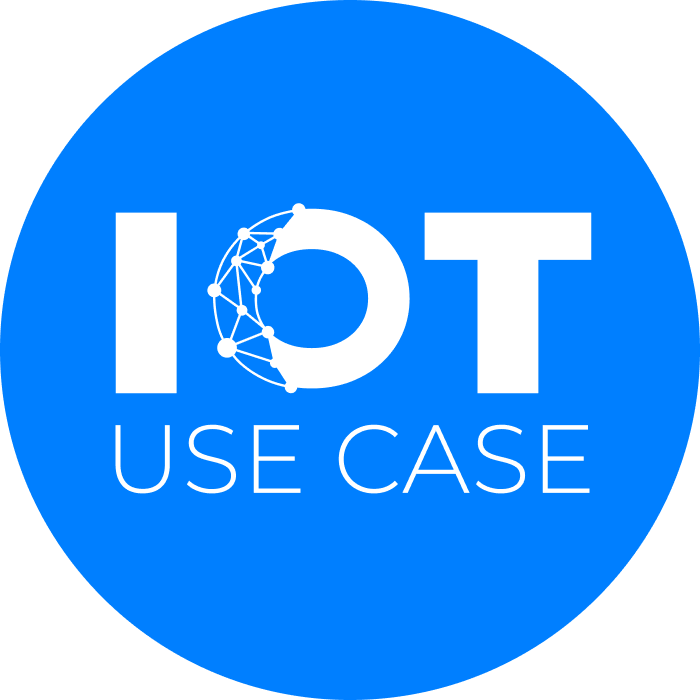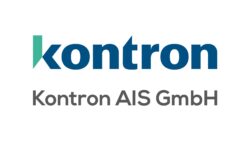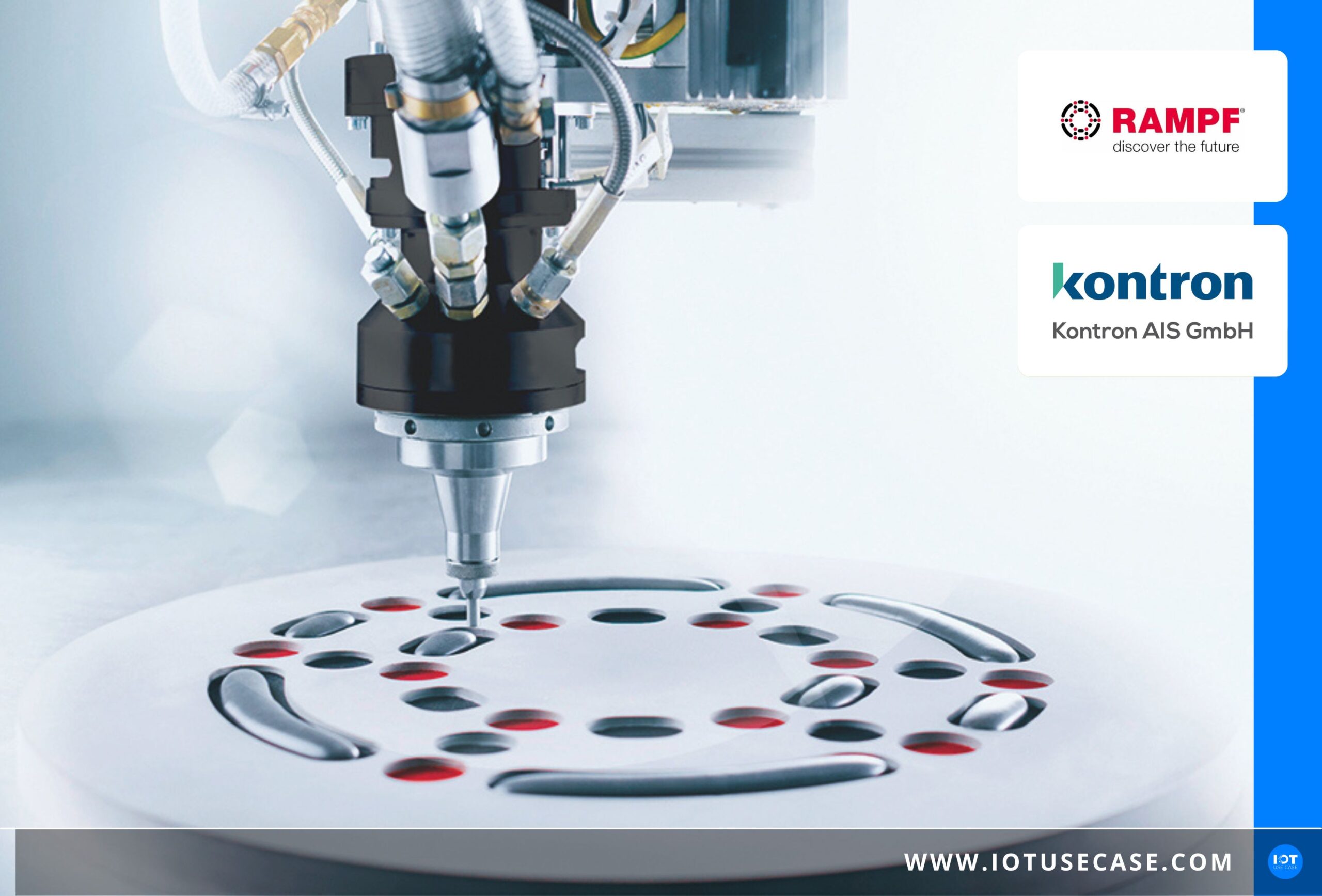In podcast episode 34, Madeleine Mickeleit talks to Vanessa Kluge, Product Manager in the Digitalization division of the software company Kontron AIS, and Stefan Huber, Director of Project Management at the company RAMPF. The use case revolves around the topic of digital service and how to successfully work with a Software as a Service solution.
Podcast episode summary
The trend topic of digital service does not seem to stop at any industry. Good for software companies like Kontron AIS, which accompany companies from a wide range of industries on the path to optimal service with agile software as a service and cloud solutions.
The goal of RAMPF, a manufacturer of reactive resins and specialized machines, was to create digital added value for its customers and to optimize internal processes through innovations in the areas of customer service, data documentation, and communication. Also high on the agenda were the topics of transparency, data security and customer trust.
The new solution should ensure seamless integration of existing systems, such as SAP, with the new interfaces. To realize this vision, they were willing to turn their backs on old structures and set out into uncharted waters. For this purpose, they brought the Dresden-based company Kontron AIS on board. RAMPF had recognized the opportunity and necessity to expand its range of products and services to include a comprehensive service area, including digitization, in order to position itself even more successfully in the market.
Through open employee communication, a gradual, step-by-step roll-out of the cloud solution and successes that were not long in coming, the initial skepticism within the workforce quickly evaporated. In the meantime, almost all project communication runs via the so-called EquipmentCloud®, which was implemented at RAMPF one and a half years ago. In the podcast, this solution is explained in detail and its advantages are illustrated with examples from daily business.
In addition, the question will be clarified whether machine data are already present or still dreams of the future, in which way a Node-RED interface for integration is applied and how the acceptance by the end customer for such coupled solutions looks like.
Podcast interview
Hi Vanessa, hi Stefan – great to have you on the Industrial IoT Use Case Podcast! Vanessa, by way of introduction, can you briefly say something about your role at Kontron AIS and your core business?
Vanessa
I am very happy to be here today. My name is Vanessa Kluge. I am a product manager in the area of digitalization at Kontron AIS in Dresden, where I am strategically responsible for the digital service solution EquipmentCloud, among other things, and deal primarily with the topics of target group pain points, product vision, use case development and market trends around digitalization and IIoT. Kontron AIS has been active in the market here in beautiful Dresden for 30 years. We are a solution provider for industrial software, ranging from PLCs, machines and light computers, production control to cloud solutions, for which I am co-responsible. Basically, we take care of everything that needs to be automated, integrated and digitized in the factory or even in machines and plants. Since the end of 2019, we have also been part of S&T AG from Linz, and with the sister company Kontron, which is also part of this, we also have a very strong hardware partner with whom we can also combine both know-how – software and hardware – and thus also push the topic of connectivity between plants and machines as well as factory operators and plant and machine manufacturers more strongly.
You just mentioned the topic of the cloud and your EquipmentCloud. I would go into that in more detail in the next step before we get to the use case and your project with RAMPF. First of all, what do you think are the top 3 challenges that customers are facing in terms of digitalization at your company today?
Vanessa
What we see is that the mechanical engineering sector is having difficulty continuing to generate sustainable growth due to the saturated market and also the competition, which is of course very great at the moment. We are also seeing that more and more companies from outside the industry or even start-ups are solving customer problems in a completely different way and thus make a convincing impression on the market. Solutions need to be found here. In addition, we also see that machine manufacturers are faced with the challenge of having the courage to perhaps also try out new ideas, especially in the context of this good economic situation. So sure, there are companies that are affected differently by the pandemic, of course. But we also see that most of them are pretty busy right now. This leaves little time to move forward in terms of digitalization. It’s important to perhaps set up interdisciplinary teams to develop new ideas. And the third point I see is probably this uncertainty in terms of customer acceptance and willingness. There are many legal issues that have not yet been resolved, including at the political level. And that’s another challenge that customers have.
I also hear time and again that acceptance by end customers is not yet so widespread. To make the round of introductions complete: I am pleased to also welcome the RAMPF company and you, Stefan, as a representative in the round. Perhaps you might also briefly introduce yourself and also say something about your core business right away.
Stefan
I am also happy to be with you today. My name is Stefan Huber. I am Director Project Management at RAMPF. The company RAMPF may not immediately mean something to everyone, but you can find us in very many areas. We are special machine builders. We build an average of 100 plants per year with about 225 employees. We are part of a relatively large group with well over 900 employees worldwide and systems for processing reactive resin and potting materials. You can find us relatively widely – that is, not only in the depths of any direct products, where otherwise you do not have much to do with it. Everyone has us at home somewhere, e.g. in their car or in an electronic toothbrush, which probably also contains RAMPF material. So from that point of view, we operate in a very, very large area – from automotive, to white goods, to home products.
Can you tell us more about the field of application?
Stefan
Yes, wherever you have to seal anything in the end or protect electronics from moisture, our material is used. Typical applications include the charger of an electric toothbrush, which must be protected when washed under the tap. This must be protected and, of course, moisture must not get in. For example, a reactive casting resin is used to protect the electronics from moisture.
A question about service: You do quite a lot for your customers in terms of service. How would you describe your service in general?
Stefan
Our service starts relatively early. We accompany the customer from the initial idea through to the selection of materials – as I said, we not only manufacture the machines, but actually also the potting materials. Here we accompany him in the selection of materials to get the best possible constellation. We then accompany the customer via our application engineering department with the first samples by producing the finished components for them. In some cases, we also manufacture the customer’s parts in-house, which we then make available to him for sale. Once he has received the machine, we naturally accompany him through the entire project via the customer portal, right up to the point where we also offer our after-sales service and maintain the machine for him, so that he can actually only concentrate on producing his components.
Today we are talking about digital service. Digitization is not traditionally your core business. I would be interested to know why you went down this path and what importance you attach to digitization.
Stefan
We used to have our customer portal where we uploaded our documentation so that the customer could easily access their documentation at any time. In 2017/18, we then decided we had to do something about it, we wanted to move forward. Everyone talks about digitization, so we should start somewhere. We then realized that we needed a new customer portal that could do a bit more than just document and manage. That’s actually how we came across Kontron AIS and worked with them to bring the documentation portal online. Today, we provide our customers with documentation there and, in the case of new plants, the option of handling the entire project management in this portal. This means that he can see at any time where his plant is in the process of completion. He can communicate with us through the portal, he can assign us tasks. But we can then also make requests to him via the portal, so that we end up with a huge amount of transparency in the project. “Creating transparency” is the credo that this customer portal represents for us.
So what’s a sample machine of a client that you guys manage? How do you have to imagine this?
Stefan
Yes, these are indeed our special machines. So at the end of the day, it goes from small table cells on which you have smaller components like a 3D printer and can produce on them, to large production lines that are inside at an OEM where they produce tailgates, for example.
And these plants are then created in the portal with an overview of any documentation, but also project management, for example, of this production line that’s at the OEM in the case, right?
Stefan
Exactly, the OEM communicates with us via the portal and says, for example, that he needs another program change or that he has a defect somewhere because he has crashed. We then see this directly via the portal and can help him accordingly.
Could you tell listeners a little bit about what your day-to-day business is like? You just said it, too, but maybe summarize it again: What challenges do you face? Is it primarily the non-transparent processes or in which direction exactly is this going?
Stefan
Yes, it is definitely about the non-transparent processes. At the end of the day, one big challenge we had was all the Excel lists until a project starts. We had about 15 Excel lists: we took the requests from the customer, we made some calculations, then we wrote some offers, then we went through the first specifications with the customer, made deviation lists and so on. And all of that was so opaque because it was scattered in umpteen documents, so we said we need to bring that together. And so this whole topic of cloud and collecting information in the cloud became more and more important for us to create transparency.
And is this a topic that primarily concerns the customer, i.e. externally, or are there also departments that have access to it, or what is the scope of the whole thing?
Stefan
So with us, it’s fully comprehensive. In other words, we had 15 Excel lists internally till the start of a project. We have been able to replace almost more internal documents than external ones. However, the necessary external appearance also gives the customer more transparency as to how things work internally.
After all, digitization is often a topic that is driven by management. Did you have something like a return on investment calculation at the beginning? This is often discussed: Return on investment, added value, problems that could be solved, etc. Was that clear to you or was it more of an investment for the future?
Stefan
This was not an issue of return on investment. Ultimately, the problem for us was that we wanted to create transparency and ultimately improve it. And you know it’s going to cost money for sure. And then whether that returns at some point, we’ll see. At the moment, as I said, there is no real return on investment because there is no new business model behind it yet. That’s why our management said at the time: “No, we’ll do it. It doesn’t matter whether it costs money or not, it just takes us a lot further forward.”
Now you had just mentioned the keyword business model. The bottom line is that I’m very much on the topic of IoT here on the podcast. One gets the impression that German SMEs have definitely already embarked on this path, but that working with live data – especially together with the end customer – is still in the starting blocks. What data are we talking about with you? Is this already live data from the machine, coming from the production line, or is that more of a pipe dream?
Stefan
At the moment, that’s just a pipe dream. We currently have everything that is static data – master data, open items, milestones, all the maintenance topics, checklists. These are issues that, as I said, are very static. But at the moment, we are also working with Kontron AIS to visualize live data from our plants in the portal and thus show the customer how well his plant is actually working. He sees his workload, gets error messages if necessary, etc.
That means the focus is shifting towards live data already?
Stefan
Yes, definitely. I think right now it’s definitely important data that we want to have as well. It turns out to be somewhat difficult because many customers simply do not allow this remote access. So far, of course, we have offered remote support – via a modem, for example. But even then, customers still don’t want to share their data like that. You don’t walk in there with every customer and the customer yells, “Hooray!” and we get everything we want.
One hypothesis on my part would be that many also build up their own cloud infrastructure step by step, also set themselves up in terms of security, and then release really dedicated data to external parties in the next step. We’re not there yet, at least in the smaller midmarket, but I think things are moving in that direction. Now we have talked about different data. I’d be interested to know what exactly the solution looks like in the cloud, Vanessa? What do you have to bring to the table to tackle a project like this?
Vanessa
Our solution, EquipmentCloud, is a Software as a Service solution that we provide to RAMPF as a white label solution. It is a platform equipped with various modular and ready-made applications, which in turn can be selected at will and used on a launch platform. This is actually the basic principle of the platform. What we usually do is we start with the user and rights management that the system comes with. Especially when different actors are working on the same platform, it is important to assign certain roles and also define which data is only visible internally and which externally. The platform is organized in such a way that, for example, all data is made accessible by means of the machines that are integrated there. This is the central navigation structure of the system, so to speak, and everything that you want to find there again is connected and often also coupled to this machine or even entire machine types. If you have series production, for example, there are very similar machines, so you don’t have to enter data twice. RAMPF also provides the system to the end customer and therefore it was of course important that there is an individual RAMPF branding to the outside. For example, there is a corresponding domain redirection, so that the name can already be found in the domain. For example, we have also established a self-registration format so that you can co-manage new users. The platform is very extensively spiked with rest APIs, so that even documents or master data can be exchanged automatically and do not have to be maintained manually.
You just mentioned rights management: That’s then probably different rights and roles that you can then have within this cloud?
Vanessa
Exactly, so both the separation between the machine builder and the end customer, who has the system on site at his factory, and even deeper. Also with regard to different departments – the management is provided with different information or has different access than a service employee. Various gradations can be made there. Which applications do I make available to customers? To what extent can they handle the applications? Can I create checklists or just view them? So there are very granular gradations to organize it better.
Now you have mentioned different applications. What are they, for example? Can I put something together by drag and drop or how does that work exactly?
Vanessa
Exactly, we have successively expanded a total of nine different applications that we always equip together with the various machine manufacturers since the product has been available – for example, in document management, which we call eDocs, open points lists or also Smart Services tickets, which is then Open Issue. Then we have an equipment hub, which is actually the central unit. Here I can configure my machines, view master data, plan workflows and milestones, or create digital checklists. Or the maintenance area, where I have a maintenance plan and can align maintenance based on certain criteria and parameters – for example, according to operating hours or certain processes that I monitor. If any threshold is exceeded, then that automatically triggers maintenance or some other alarm. Or if I have any cyclic maintenance under warranty. There are many different topics, depending on what the customer needs. And we usually start small and solve the pain points that are the biggest first.
Once the machines have been created, all I have to do is link live data – sounds relatively simple, but in practice it’s not. How far are you already thinking in this direction? Are there any approaches there already?
Vanessa
Yes, definitely. We have a module called Monitoring. In this regard, we also work very closely with our sister company Kontron. We deploy these box IoT gateways, which we then provide to the customer to do the pre-processing of the data. We also use a Node-RED interface, which we also use to do this matching – that is, translating from different interfaces. Because not every customer has standard interfaces, a certain amount of pre-processing is necessary. And if, for example, the plants are already equipped with Ress, i.e. the web standard with which the cloud works, it is also possible to couple this live data directly. That means I can view process data – temperature history, pressure, alarms, messages, the status of the plant itself, whether it is currently producing or has come to a sudden stop, and what that might be related to. The correlation to the alarms is also displayed there directly and the machine builder can react very quickly and take remedial action.
Now Node-RED is very common in the industry – can you maybe introduce it to the listeners who have never heard of it before?
Vanessa
Yes, it’s just a graphical interface where I can just sort of design certain flows of data that I want to transmit. So I don’t need extensive software knowledge for that, it’s just certain modules or pre-built areas that I can just tinker together. We have already developed a ready-made node for this purpose and when setting up the whole thing, we discuss with the customer what kind of data is to be transmitted and then the node is adapted to the customer accordingly. The IoT gate is then already pre-configured, delivered and made available to the customer.
That is, with the table cell example from earlier, I would have the table cell, a production line, and I would set certain alarms using the Node-REDS. And when a certain threshold is exceeded, the process is then triggered, so to speak.
The data must first be entered into the portal and probably not all of them were available digitally – especially if we now move away from the live data to the document topic. Stefan, what is the path to the solution and what is the effort behind it?
Stefan
The effort involved was relatively high, it has to be said. We had a lot of data available digitally, especially with regard to Excel lists. Of course, all this was available in digital form. However, we have post-digitized many documents via scanning. But, of course, the information was in all sorts of places. This means that we had to spend a lot of time at the beginning gathering everything together and making sure that we could get reasonably clean data into the system. At some point, we decided not to update everything, but to limit ourselves to the last four years, because otherwise the effort would have been relatively large.
What competencies were needed at this point and for the collaboration? What did you have to bring with you?
Stefan
We actually didn’t have to bring much forward for the time being. The support that AIS has given us at the point is so good that you can really structure and work with the portal without deep IT knowledge. What you also have to say: Kontron AIS is really a super partner, a very agile company. For example, if we have requirements that we would like to implement in the portal, we submit them to AIS and usually receive feedback quite quickly and usually even a solution quite quickly, so that we can implement exactly our requirements. So IT knowledge is really not necessary thanks to AIS support.
You said “you’re setting that at AIS” – Vanessa, what exactly is the interface there?
Vanessa
We are in very close contact with the customer here. We really have a lot of customer meetings that we do, also events where you interact with each other, of course. To bundle this information, we also use our own platform to handle communication with the customer. We call it the AIS Customer Portal and that’s where these new requirements are stored. And we also evaluate this in certain committees together with the PO and developers, who can of course also assess the effort and risks. And then new feature requests are taken into account or, of course, it can also be that it does not fit the strategy of the product and then something like that is sometimes put on hold or even rejected. But in general, we try to create transparency for the customer and show how and what we are working on and what the solution might look like. We might need more support and feedback from other customers. Whether they might also see that need or have that need to implement that.
Stefan, what were your success criteria for this project right from the start?
Stefan
One question was: What do we want to achieve with regard to the customer? What is a success criterion for us there? One issue was clearly data security, simply to gain the customer’s trust. Ultimately, collaboration in the cloud is based on this. What we wanted to continue to achieve was innovation in the customer service area, where we will certainly continue to work on it. That means bringing in even more functions in order to be able to offer the customer even more service and, of course, to create recognition among customers. That means, if he has a RAMPF plant, that he knows where to find everything. This was a major milestone for us in the direction of our customers, which we wanted to achieve. Internally, it was very important for us to make workflows more efficient, to create transparency and to be able to offer the same level of information across all departments. Going forward, we wanted seamless integration of the existing systems (SAP) with interfaces. And what was also very important for us was, of course, to have a partner with whom we can guarantee quick solutions to problems and ultimately also a quick response to our requirements.
Vanessa, you mentioned earlier that there are a wide variety of features and tasks that you are receiving. How does the focus work, also on different use cases?
Vanessa
Like many companies, we have a certain roadmap. We scan the market, we look at what the competition is doing and where maybe the product should go. This is the roadmap topic, so to speak, which we also revise on a quarterly basis. So we have a basic idea of where we want to go. We work in an agile way and our product thrives on customer feedback. And only in this way can we really understand the customer’s pain points. When feedback comes from the customer, it is analyzed: Does it fit into our strategy? Do we have any gaps there, perhaps? How could this possibly be beneficial to all other users? And how can this perhaps be implemented? Sometimes we also have topics that are very extensive. Then we work according to the Minimal Viable Product principle. That means we simply start with a basic concept, a minimal product, and see how that is received. If you get really good feedback and it is accepted, then you gradually expand it.
What is the customer feedback on IoT? And can you perhaps give an estimate of what percentage of projects with IoT are already running?
Vanessa
I would say that this is already a sharpened topic on the market and also especially in mechanical and plant engineering. There are also an enormous number of solutions that go in that direction. I think, nevertheless, some companies are still at the beginning and wonder how they are actually supposed to implement this. It is also precisely this abundance of possibilities that makes it difficult to make decisions. I think that the managing directors also need to focus more on this. The topic of services in itself is one that I can use to drive growth forward. But it also requires me to change my way of thinking a bit, so that I no longer think only in terms of products, but also link sales and service more closely. That I might also strengthen my service departments in the company itself and have a completely different approach to sales. These are perhaps the hurdles as to why perhaps the potential that is there has not yet been realized.
To slowly come towards the end and conclude this project: Stefan, how does the end result look for you so far, what have you achieved? Can you summarize that for us?
Stefan
After one and a half years we have a) significantly improved communication with the customer and b) also saved a lot of time internally. If only for the fact that it takes much less time to search for documents. In fact, almost 90 percent of our project communication now takes place via the Project Cockpit. There was not quite as much acceptance among employees in the beginning. But after they saw that it actually works very, very well and that we didn’t come up with all the changes in one fell swoop, but rolled everything out gradually, they accepted it very well. In total, we have completely replaced about 50 percent of our Excel lists. We have well over 1,000 machines on our portal, which are also actively used. This means that around two thirds of our end customers are now served via the portal – whether for further documentation or project communication. A large variety of functions will certainly be added in the next twelve months.
Vanessa, you are also active in various other areas. How can such use cases be transferred and where else can you be found?
Vanessa
I think the customer portal is a topic that appeals to many companies. Our experience is that it doesn’t really matter which industry the companies are in. Bundling information into one place and making it accessible at all times without barriers is simply an important issue that many need as they move towards digitization. And we also embed ourselves seamlessly into this existing IT infrastructure, we want to interact. We also work with various third-party providers for this purpose. Especially when it comes to solutions where we do not have the core competence. We don’t want to replace SAP at this point, that doesn’t work at all. Rather, we want to interact there and simply create new synergies. We have users from various industries who are already using this customer portal – be it from robotics, automation, photovoltaics, special machine construction with RAMPF up to series production or laser material processing. There are many, many different industries with us that definitely get value out of it.
If I want to contact you, what is the best way to reach you?
Vanessa
Definitely via the website www.kontron-ais.com. In addition, we also have a landing page for the product itself – www.equipmentcloud.de. And of course I can be found and reached via LinkedIn under Vanessa Kluge, just like the entire Kontron AIS team.
And Stefan, how does one find the way to you?
Stefan
Directly via the websites www.rampf-group.com or me personally also gladly via LinkedIn, Stefan Huber.
Thank you for participating and for the insight into this exciting project!













